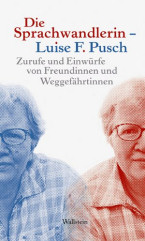
(Françoise Quoirez)
born on June 21, 1935 in Cajarc, southwest France
died on September 24, 2004 in Honfleur, France
French writer
20th anniversary of her death on September 24, 2024
Biography
In 1954, in a small Parisian bistro on the Boulevard Saint-Germain frequented by famous existentialists, Françoise Sagan wrote the book that was to mark the start of the “Sagan myth.” Bonjour tristesse, written well before the sexual liberation of the 1960s, was an immediate financial success and a literary sensation. At the age of only 19, Sagan had portrayed the sexual desires of a woman so boldly and frankly that readers across the world were scandalized. Her candor was appreciated by the younger generation who identified with her unconventional approach, and she received an award from the French literary critics the year Bonjour tristesse was published.
Françoise Quoirez came from a wealthy industrialist family. Proust, Apollinaire, Faulkner, Éluard and the existentialists were her favorite authors and she chose the titles for her novels from among their texts. She was extraordinarily productive and diverse, creating an oeuvre of over 40 titles that included novels (Aimez-vous Brahms?, A Fleeting Sorrow and many more), novellas, plays (Château en Suède), film scripts, and autobiographical works (Derrière l'épaule). Both in France and abroad, her novels topped the bestseller lists again and again. She also wrote lyrics for Juliette Gréco, Yves Montand and Johnny Hallyday, created theater productions and made films. Although she defended the “right to be lazy,” she herself worked continuously and to the point of exhaustion.
Her positions on social and political issues were expressed most clearly in public statements and through the support she lent to specific manifestos. For example, she spoke out on the right to resistance in the Algerian war in 1960, on the legalization of abortion in 1971, and in support of Mitterrand in 1974. Her colorful private life also garnered the attention of the public. Like her characters, she belonged to fashionable Paris with all of its associated tastes and vices - fast sports cars, alcohol, gambling, horse racing, drugs – and over the course of her life she spent the millions she earned from her books on such pursuits. Sagan was extremely generous with her money; she financed a whole clique of friends who lived at her expense. She herself admitted that she had been wrong about money: “I always thought that money was a good servant and a bad master. A means and not an end. ... But money is a tyrant.”
She played up to her public image, living a life full of excesses and scandals that made the headlines and kept the courts busy as well. She was convicted several times for the possession and consumption of drugs and for tax evasion, e.g. in the famous bribery affair at the Elf Group.
Florence Malraux has identified Sagan’s inability to be alone as the cause of her flight into excess. Loneliness is the main theme in her work—loneliness as well as the efforts undertaken to escape it. She herself went from one love affair to another, over time developing a preference for women. After two very brief marriages - with Guy Schoeller and then the American artist Robert Westhoff, with whom she had a son - she found true love with the fashion designer Peggy Roche. The two women lived together for over 15 years, until Peggy Roche's death. Yet Sagan preferred not to discuss her relationships with women - an influence of her middle-class upbringing? Unlike Colette, to whom she is often compared, she also never wrote of the love between women in a novel.
Françoise Sagan’s image as a frivolous and immoral woman notwithstanding — it was writing that was her raison d’être. Writing was “the only justification of herself, the only active sign of her existence.” Yet despite the enormous commercial success of her books, not all literary critics took her seriously. She was accused by some of using her great talent only to write about themes such as sadness, failure, defeat and of writing as quickly and superficially as she - according to the press - seemed to live. Other critics, however, praised the musicality of her sentences as well as her simple, clear, and natural writing style. She herself admitted to at times having published novels she was not completely satisfied with because she had needed the money. Her autobiographical texts reveal a serious woman who was sensitive to the tragedy of life, a tragedy that befell her in old age as well.
She was financially ruined and seriously ill. She lived with Ingrid Mechoulam, who nursed, cared for and loved her to the end, but who also kept her isolated from friends. She died of a pulmonary embolism at 69 and was buried in Cajarc, in the country where she was born and which she loved, and in the cemetery next to Peggy Roche, the woman who had loved her and whom she had loved.
(Text from 2009; translated with DeepL.com; edited by Ramona Fararo, 2024.
Please consult the German version for additional information, pictures, sources, videos, and bibliography.)
Author: Christine Le Franc
Quotes
A strange melancholy pervades me to which I hesitate to give the grave and beautiful name of sorrow. (Bonjour tristesse)
If you hold the rights to one or more of the images on this page and object to its/their appearance here, please contact Fembio.



